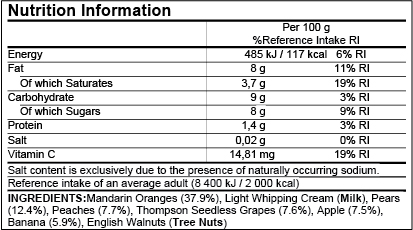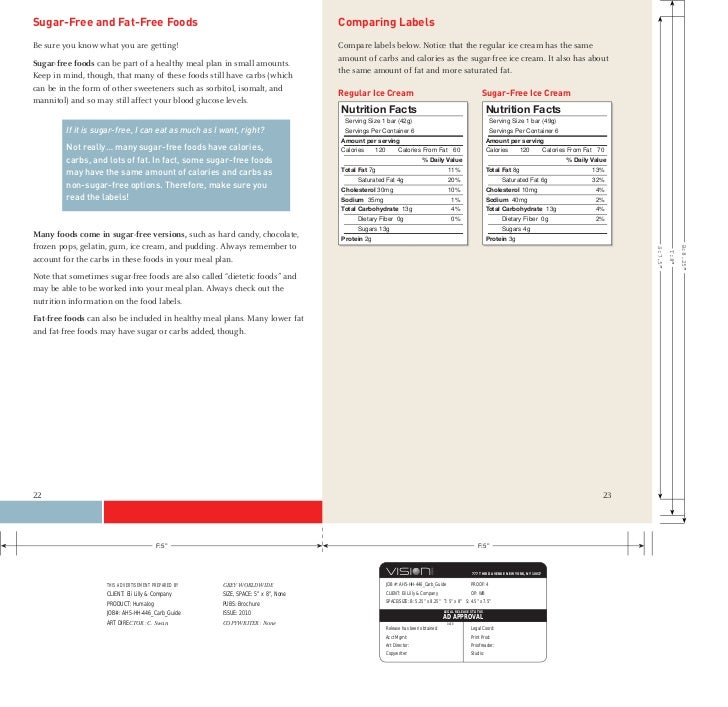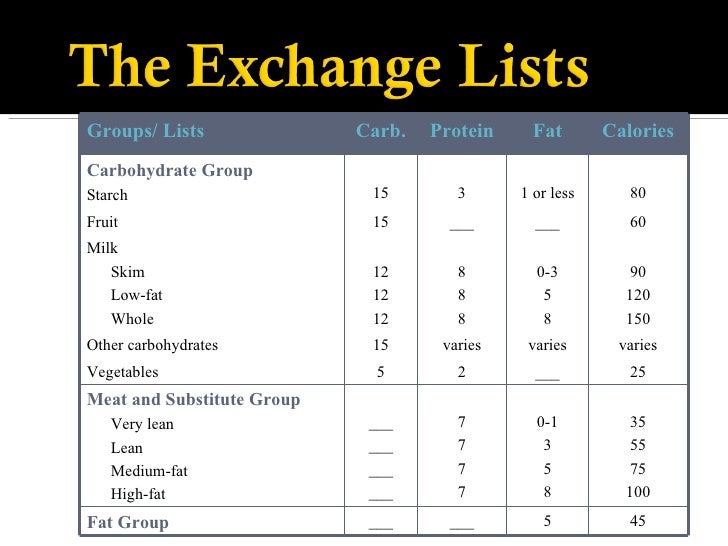41 carbohydrates on food labels
Understanding food labels | Diabetes UK All carbohydrates raise blood glucose levels. Labels on the front don't include the amount of carbs, so check the label on the pack for the total carbohydrate, which includes carbohydrates from starchy food as well as sugars. Food Labels: Fat & Cholesterol | Home & Garden Information Center The 2015 Dietary Guidelines for Americans recommends the following intakes of fat and cholesterol every day: total fat—20 to 35% of calories, depending on age and gender (65 grams for the 2,000-calorie intake level used in the Daily Value)*. saturated fat—less than 10% of calories**. trans fat— keep as low as possible.
How to Understand and Use the Nutrition Facts Label | FDA Dietary fiber, vitamin D, calcium, iron ad potassium are nutrients on the label that Americans generally do not get the recommended amount of. They are identified as nutrients to get more of....
Carbohydrates on food labels
Food Labels | CDC If you eat the whole thing, you are eating 8 times the amount of calories, carbs, fat, etc., shown on the label. Total Carbohydrate shows you types of carbs in the food, including sugar and fiber. Choose foods with more fiber, vitamins, and minerals. Choose foods with lower calories, saturated fat, sodium, and added sugars. Avoid trans fat. Food Labels | Nutrition.gov Food and Drug Administration (FDA) regulates the safety of food for humans and animals, including foods produced from genetically engineered (GE) plants, sometimes referred to as "genetically modified organisms" (GMOs). Find out more about the safety of GE plants, and how they are regulated here. Learning To Read Labels :: Diabetes Education Online On a nutrition food label, subtract the fiber from the total carbohydrate amount. When you read food labels, the grams of sugar are already included in the total carbohydrate amount, so you do not need to count this sugar amount separately. The grams of sugar listed include both natural sugars, from fruit or milk, and added sugars.
Carbohydrates on food labels. How to Read Carbohydrates on Nutrition Labels - Optimal Health Breakdown of the Label. If we break down the carbohydrates section of a nutrition label it usually has 3 parts. Carbohydrates-Sugars-Dietary fibre. The top carbohydrates row is the total amount of carbs present. Made up of all the sugars, dietary fibre and starch, which is the remaining amount after the sugar and fibre. PDF Challenges with Carbohydrate Counting & Food Labels •Read the Nutrition Facts on food labels to find out how many grams of carbohydrate are in foods you eat. Carbohydrate Servings • Original label introduced 20 years ago ... on other foods with carbohydrates at the same meal. Carbohydrate counting helps to achieve balance. Carbohydrates in Meat - Fish Poultry 3 to 4 oz serving. 0g. Reading Food Labels | ADA - American Diabetes Association The Nutrition Facts labels on foods are really the key to making the best choices. We'll cover the basics so that these labels make shopping easier for you. Get started Understanding Carbs You've heard it all. From carb-free to low-carb, to whole and empty carbs, it's hard to know what it all means. Learn more Food & Blood Sugar How are Carbohydrates & Dietary Fiber Labelled on Foods? Net carbohydrate is the total amount of carbohydrate, minus the amount of dietary fiber found in a food, and is often displayed on the front of food packaging. Essentially, this is a fancy way for food manufactures to market their food as being more superior than their competitors. For example, a protein bar manufacturer may make the claim that ...
PDF Read the Food Label for Carbohydrates - NHLBI, NIH Food labels help you choose foods that are lower in calories and in carbohydrates and sweeteners. Here is a food label for a 12-ounce regular soda. The label provides lots of useful information. 1. Serving Size and Number of Servings The serving size is 12 ounces. There's 1 serving in this container. 2. Amount Per Serving Interactive Nutrition Facts Label - Food and Drug Administration Sodium 430mg 17% Total Carbohydrate 46g 25% Dietary Fiber 7g Total Sugars 4g 4% Includes 2g Added Sugars Protein 11g 10% Vitamin D 2mcg 20% Calcium 260mg 35% Iron 6mg 6% Potassium 240mg The % Daily... Food Labels (for Teens) - Nemours KidsHealth A food with 5% or less of a nutrient is low in that nutrient. A food with 10%–19% of a nutrient is a good source of that nutrient. A food with 20% or more of a nutrient is high in that nutrient. The information on food labels is based on an average adult diet of 2,000 calories per day. The difference between good carbs and bad carbs in a low-carb diet Thankfully, after decades of effort from health advocates seeking to make helpful changes, we now have food labels that make more sense. This has been particularly helpful for carbohydrates on labels.
Food Labels and Counting Carbs - dummies Total Carbohydrate is listed in grams. Because %Daily Value is written in bold and off to the right side of the label, and lined up neatly with the actual amount, it is easy to allow your eye to zero in on the %Daily Value rather than the actual amount in grams. How to Read Carbohydrates on Food Labels - GlycoLeap When learning how to read carbohydrates on food labels, always remember that 1 serving of carbohydrate is equal to 15 g of carbohydrates. If you want to have a snack, it is recommended to eat no more than 1 to 2 servings of carbohydrates in one sitting. That would be around 15 to 30 g of carbohydrates. Snack = 15 - 30 g of carbohydrate How to Read Food Labels | Your Low Carb Hub The below label shows there are 4.3g of carbs in a 15ml serving size which is equivalent to one tablespoon. 3.4g of this is sugar. There is 22.7g of sugar in 100ml, that's 5.6 teaspoons of sugar. The World Health Organisation (WHO) recommends no more than 5-10 teaspoons of added sugar in an entire day. How Do They Calculate Calories on Food Labels? 5 grams of fat (5 x 9 = 45 calories) 22 grams of carbohydrate (22 x 4 = 88 calories) 2 grams of protein (2 x 4 = 8) ...should contain approximately 140 calories. It's important to recognize that 4-9-4 is an average, and not an exact amount. For example, 1 gram of fat in one food may yield 8.34 calories while 1 gram of fat from another food ...
Sugars on food labels - Sugar Nutrition Resource Centre It shows this information in a serve and also in 100ml (liquid) or 100 grams (solid foods). Sugars are included as part of the carbohydrates that are listed in the nutrition information panel, as well as being listed separately as 'sugars'. The amount of sugars in the nutrition information panel will include naturally present sugars, such as ...
Reading food labels: Tips if you have diabetes - Mayo Clinic Less than 5 grams of carbohydrates a serving Do the math Pay attention to serving sizes. The serving sizes listed on food labels may be different from the serving sizes in your meal plan. If you eat twice the serving size listed on the label, you also double the calories, fat, carbohydrates, protein, sodium and other ingredients.

Read food labels – Step 3: Check the Ingredient List for Sugars, Refined Carbohydrates, and ...
Food Groups for Carbohydrates, Proteins, Fats, Vitamins and ... Apr 02, 2020 · According to the National Center for Health Research (NCHR), the USDA recently replaced the food pyramid that was introduced years ago. Instead of the pyramid shape — which the NCHR says was criticized for confusing consumers — the new "ChooseMyPlate" recommendation contains five food groups of unequal sections, which include a hearty mix of carbohydrates (fruits and vegetables), proteins ...
What Is the Difference Between Sugar & Carbs on Food Labels? Each gram of carbohydrate and protein provides 4 calories, while a gram of fat provides 9 calories. Carbohydrates are found in a wide variety of foods, such as grain products, including bread, pasta, breakfast cereals, oatmeal, flours, crackers, starchy vegetables like potatoes and corn, legumes, milk, yogurt, fruits, juices, sugar and desserts.
Carbohydrates and Blood Sugar | The Nutrition Source ... Dividing carbohydrates into simple and complex, however, does not account for the effect of carbohydrates on blood sugar and chronic diseases. To explain how different kinds of carbohydrate-rich foods directly affect blood sugar, the glycemic index was developed and is considered a better way of categorizing carbohydrates, especially starchy foods.
Reading Food Labels for Carbohydrates - dummies To find the amount of carbohydrates in your foods, follow these steps: Look for the line that reads "Total Carbohydrate" on the label. The value on this line will tell you how many grams of carbohydrates are in one serving of the food. Check the number of servings per container to see if your package has one or more servings.
Simple Carbohydrates vs. Complex Carbohydrates - Healthline Aug 19, 2020 · Be sure to include the following complex carbohydrates as a regular part of your diet: 1. Whole grains. Whole grains are good sources of fiber, as well as potassium, magnesium, and selenium.Choose ...
What's the Difference between Carbohydrates & Sugar on Food Labels ... Carbohydrates - 3g. Of which sugars - 2.8g. For this example, you'd count 3g carbohydrates and the sugar amount of that total is 2.8g. Sugar is found in many forms such as sweets, fizzy drinks and desserts. However sugar is also found in other foods like sauces, condiments, bread and other savoury foods. Always check labels on foods that ...
How to Use the Nutrition Facts Label — Diet Doctor This chocolate has 14 grams of carbohydrates per serving. 3. Calculate net carbs per serving Third, check the grams of dietary fiber per serving (circled in green, above). Subtract the fiber (green) from the total carbohydrates (blue) to get the net carbs. This chocolate has 9 grams of net carbs per serving (14g carbs - 5g fiber = 9g net carbs).
Food labels - NHS Nutrition labels are often displayed as a panel or grid on the back or side of packaging. This type of label includes information on energy (kJ/kcal), fat, saturates (saturated fat), carbohydrate, sugars, protein and salt. It may also provide additional information on certain nutrients, such as fibre.
How to Calculate the Carbohydrates From the Food Label if Fiber & Sugar ... Dietary fiber is a type of carbohydrate that isn't digested by your body. As a result, it doesn't affect your blood sugar levels. So a food label that shows 10 grams of carbohydrates per serving with 5 grams of dietary fiber would only contain five net carbs. However, many foods that you'll find in the grocery store contain a minimal amount of ...
The Functions of Carbohydrates in the Body | Eufic Jan 14, 2020 · Monosaccharides and disaccharides are usually referred to as simple carbohydrates. Long-chain molecules, such as starches and dietary fibres, are known as complex carbohydrates. In reality, though, there are more distinct differences. Table 1 gives an overview of the major types of carbohydrates in our diet. Table 1.
How To Figure Out The Carbs On Nutrition Labels Trying to interpret the carbohydrates on nutrition facts labels can be downright confusing. There's a number for total carbohydrates but then there are subheadings for dietary fiber, sugars, and sometimes insoluble fiber, sugar alcohols, and other carbohydrates. What Does Everything Mean? Total Carbohydrate, shown in grams, is first.
Food Labels: Carbohydrates | Home & Garden Information Center According to nutrition experts, carbohydrates should provide 45-65% of your total daily calories. That means carbohydrates should supply 900 calories or more in a 2,000-calorie-a-day diet. Facts on Food Labels Food labels contain clues to a food's carbohydrate content, including the amount per serving.


:max_bytes(150000):strip_icc()/LabelA2-56a5c0f65f9b58b7d0de5351.jpg)








Post a Comment for "41 carbohydrates on food labels"